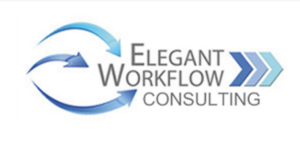HITS

Elegant Workflow: Helping Creatives Confront Technological Hurdles
Story Highlights
Dave Ginsberg, host and principal of Elegant Workflow Consulting, started the company with a simple mantra: technology needs to “get out of the way” in order to empower creatives to do what they do best: create content.
Today, Elegant Workflow provides IT, business process services and analysis to companies ranging from small start-ups to major corporations, offering everything from cloud migration, to digital asset management (DAM) solutions, to ideas on how to handle digital supply chain design and asset delivery and workflows for marketing department post production applications.
Ginsberg spoke with the Media & Entertainment Services Alliance (MESA) about the changing IT needs of media and entertainment firms today, the challenges of cloud services, and the mistakes often made when it comes to the creation of workflows and processes.
MESA: What was the impetus for Elegant Workflow Consulting?
Ginsberg: Elegant Workflow Consulting was born because I was tired of watching entertainment companies try to shoehorn their production workflows into a one-size-fits-all, often out-of-date, vendor-specific fixes. I wanted to give my clients a straight-forward process to document their specific needs, leverage new technologies, and build optimal hardware and workflow solutions. The truth is that although everyone creates content in fairly standard ways, how they manage that content is often very different, from VFX, to versioning, to storage, to delivery. Most of the time the various systems are either inefficient or don’t play well together.
Elegant Workflow Consulting analyzes their business processes, systems and workflows and then optimizes them for teamwork, security and cost-efficiencies.
MESA: What makes Elegant Workflow’s workflow, IT optimization, and product development consulting offerings unique?
Ginsberg: Since we are not tied to any specific vendors in our solutions we are open to recommend the best approach for each individual client. We start each project by looking at what the real-world day to day needs of the organization are and work with our clients around change management and employee adoption of the solution proposed. Most importantly, the systems have to actually work for the teams involved at each stage of the process. It is worse than useless to create systems that the employees won’t use. We understand the needs of all of the stakeholders from executive management to the people in the trenches like producers and editors.
Our experience spans many specialties, so we understand all major user needs and construct systems that support their individual tasks – most of all, we try to keep staff in their applications of choice and harvest a much data as possible from current tools to cut down on repetitive data entry.
For example, we had a group of editors who refused to use a very well-known asset management system. They felt that it disrupted their creative process. We built a solution that leveraged the existing system but provided an easy to use portal directly in Adobe Premiere, so they never had to leave that application. As of today, this solution is completely integrated into their process, so much so, that they cannot operate without it. Due to this approach, we have been able to help them to scale their business and grow to a much larger size without sacrificing team morale.
MESA: What is the biggest challenge you find when you do an analysis of a client organization?
 Ginsberg: So many clients create kludge nightmares for themselves with their system architectures. They have painted themselves into a corner with no easy way out.
Ginsberg: So many clients create kludge nightmares for themselves with their system architectures. They have painted themselves into a corner with no easy way out.
Workflows and processes are often built out of need: I must get a file delivered to a platform, I need footage for my editors to work or I need a way to sell and distribute my work. In the process, managers often deploy the first solution that meets their immediate requirements without considering its impact on the entire workflow.
This approach works in the near term, but then tools are often layered upon each other and before you know it, you have a number of content silos with systems as islands and many manual processes created to move information between them. They just keep building on their past mistakes and can’t just scrap what they’ve built.
We come in and look at their present architecture and do our best to leverage as many components of their current system as possible but rework them into a larger system that allows them to scale. We are not afraid to throw things out but we do not believe that a client needs to start over from scratch either to fix process issues. This is not easy but with a little bit of creativity and a lot of knowledge we typically find novel ways to integrate new technologies to make their platforms sing.
MESA: What are the unique cloud migration needs for media and entertainment companies today, and what workflow pitfalls exist with cloud services?
Ginsberg: This is a touchy subject. Everyone wants to put their systems into the Cloud. It is the hot new thing after all. And for good reason — if it is done right, if offers security, cost savings and extensibility. But it is also easy to do wrong. It isn’t a magic bullet and can backfire if you don’t build it correctly.
So what is the best way to migrate to the Cloud? There are three central factors to consider – how are you going to move materials into it, constructing systems that leverage all that it has to offer and making sure everything is secure.
For many clients it is not yet the right time for them to move to the Cloud. They may be struggling with limited bandwidth, management instance on assets being stored on-prem or simply the need to amortize large legacy equipment purchases. In these cases, we often recommend hybrid solutions that can easily be migrated to the Cloud when it is ready to serve their particular needs.
MESA: How does Elegant Workflow Consulting help its clients approach IT security, and what are some of the biggest security mistakes M&E companies make when it comes to the technology and processes they employ?
Ginsberg: The first step in approaching enhanced security is what platform your services are based on–cloud or on premises.
We believe that the major cloud providers are generally a much safer alternative to managing your security locally. Good security personnel are expensive and hard to find and those working for the cloud providers are some of the best in the business. They also have numerous tools available to safeguard your assets and make sure that only authorized users can access materials.
For on-prem, you and your team (and maybe your vendors) are tasked with maintaining security. You’ll need to make sure you are applying patches regularly and checking logs at least weekly. You’ll have more control over your data but will also have much more responsibility for its security.
For both cloud and on-premises security — we help our clients to implement solutions like least privileged access, multi factor authentication, staff risk education, asset access centralization and using timed tokens for asset downloads. Of course, there are also specific information security needs to a client’s attack surface that need to be customized as well.
MESA: Do you have a favorite use case example where a media and entertainment company made especially good use of what Elegant Workflow Consulting offers?
 Ginsberg: One of our most out of the box solutions was a fully automated versioning system for handling worldwide content distribution that is completely cloud based. We leveraged a well-regarded on-prem solution by working with the vendors to move their products into the Cloud so it could scale up and down easily as the client’s needs dictated. Since it is fully cloud based, all assets are protected by multiple security layers with fully automated logging and threat analysis. The client has had huge wins and are now able to deliver more content than ever before and have lowered their operational costs considerably.
Ginsberg: One of our most out of the box solutions was a fully automated versioning system for handling worldwide content distribution that is completely cloud based. We leveraged a well-regarded on-prem solution by working with the vendors to move their products into the Cloud so it could scale up and down easily as the client’s needs dictated. Since it is fully cloud based, all assets are protected by multiple security layers with fully automated logging and threat analysis. The client has had huge wins and are now able to deliver more content than ever before and have lowered their operational costs considerably.
MESA: What have you learned that’s specific to the entertainment industry that you now apply to your clients?
Ginsberg: The industry has changed considerably over the last 10 years. We have seen the abandonment of tape and move to digital files, distribution from primarily being linear to on-demand and most of all the transition to OTT delivery from traditional broadcast, cable and satellite. This on top of new formats like HDR, 4K and B2B delivery formats like IMF have created a lot of new business needs for clients.
But with all this change, it is also an exciting time to be in our industry although many companies are struggling to figure out how to manage their business models with so much advancement.
In my experience, fast change always enables great opportunities for businesses in either new revenue streams or for cost savings. If you can stay nimble, there are many new ways to grow your company or even new areas to enter.
MESA: What’s next for Elegant, what can we look forward to from the company?
Ginsberg: We are excited about how new technologies are revolutionizing the entire production and delivery process. Many of them are not yet ready to be fully appreciated but they offer tantalizing promise. For example, Artificial Intelligence can change the entire ecosystem from personalized content through production, animation and asset logging efficiencies.
VR and AR are yet to be really tapped in their potential either in new ways to tell stories or for new revenue streams for companies.
We are also finding many companies now able to sell their existing libraries to audiences who remember them from their youth or to new markets to enjoy.
We are seeing a lot of potential for OTT offerings in new international markets that are not really being addressed by the current players due to their specific cultural needs.
All in all it is a great time to be in the industry right now and the future is very bright. It is especially exciting to see how technology is creating new opportunities for content producers regardless of their size.









